

Life Gadget
It's really hard to design products by focus groups. A lot of times, people don't know what they want until you show it to them.
Life Style Search

Life Gadget Headline
| Mutant Timepiece | 6:06 AM |
Straight out of Poland, Damian Kozlik has designed an interesting if not confusing timepiece dubbed “X-Watch”. His attempt at a universal time piece able to be used by sighted and the blind is a step in the right direction. Not sure if X marks the right spot on this one but his rubber strap housing carries an array of LEDs behind graduated glass with extruded braille numbers that chris-cross to highlight and center the correct time. Seems like a lot of acrobatics just to tell time, but maybe life is truly in the journey and not the destination… even when counting the hours. If you ask for more details, our heads may explode. This was a hard one to figure out…let it go.
Designer: Damian Kozlik
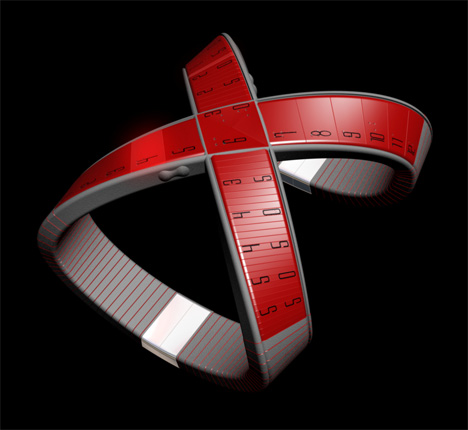
Texts from the designer:
“X - watch” is universal and integrating L.E.D. timepiece. It can be used by sighted and blind people. Watch case and straps can be made of rubber. Dial is compounded of Leds. Mechanism of the watch (IC board) is placed under them.
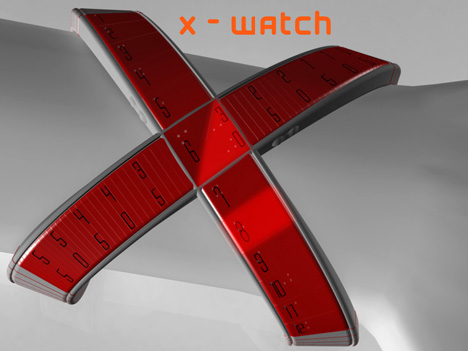
How blind people can use it? It’s simple. It’s just to move a finger along the graduated watch glass. There are extruded Braille numbers. When a person touches highlighted panel hears a sound.
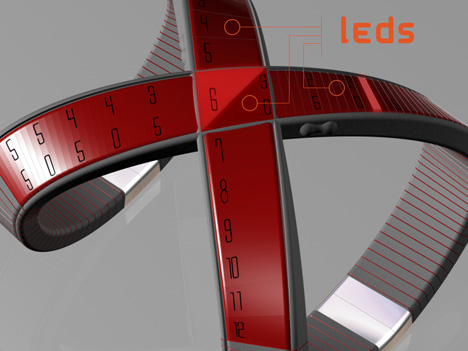
How it works? Every segment of the watch glass works like separated touch switch. There are two solutions possible:
1. Every panel works like capacitance touch switch. It needs only one electrode to function. The electrode can be placed behind a panel. It works using body capacitance. When a person touches it, it increases the capacitance and triggers the sound.
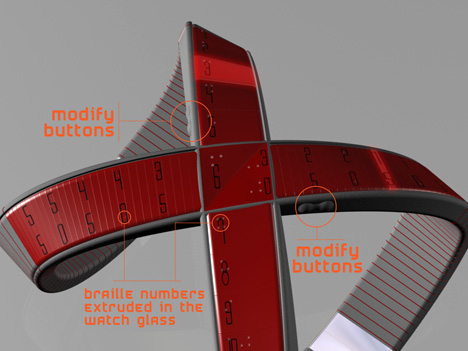
2. Every panel works like resistance touch switch. This solution needs metal units to function. There are two thin pieces of metal on the each panel. It works by lowering the resistance between them. It is much simpler in construction compared to the first solution. Placing a finger across the metal units achieves a turn on the sound. Removing the finger from the metal pieces turns the sound off.
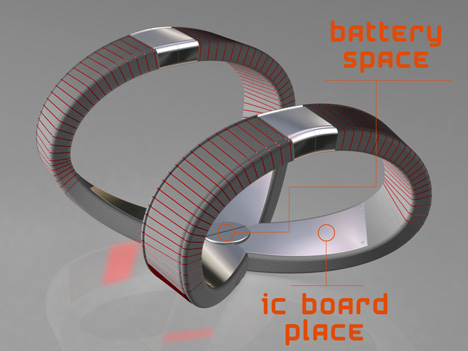










0 comments:
Post a Comment